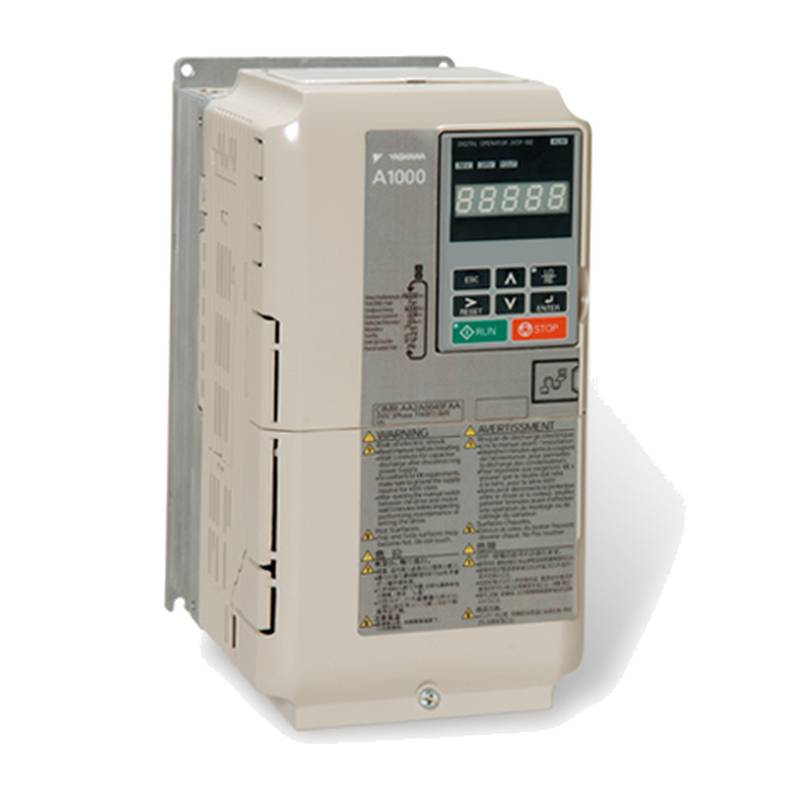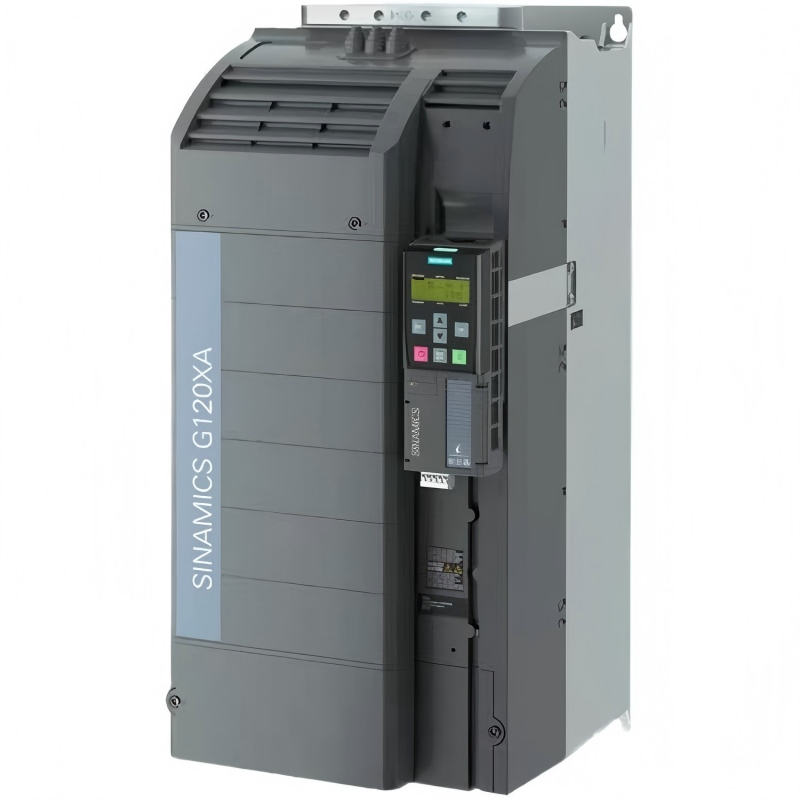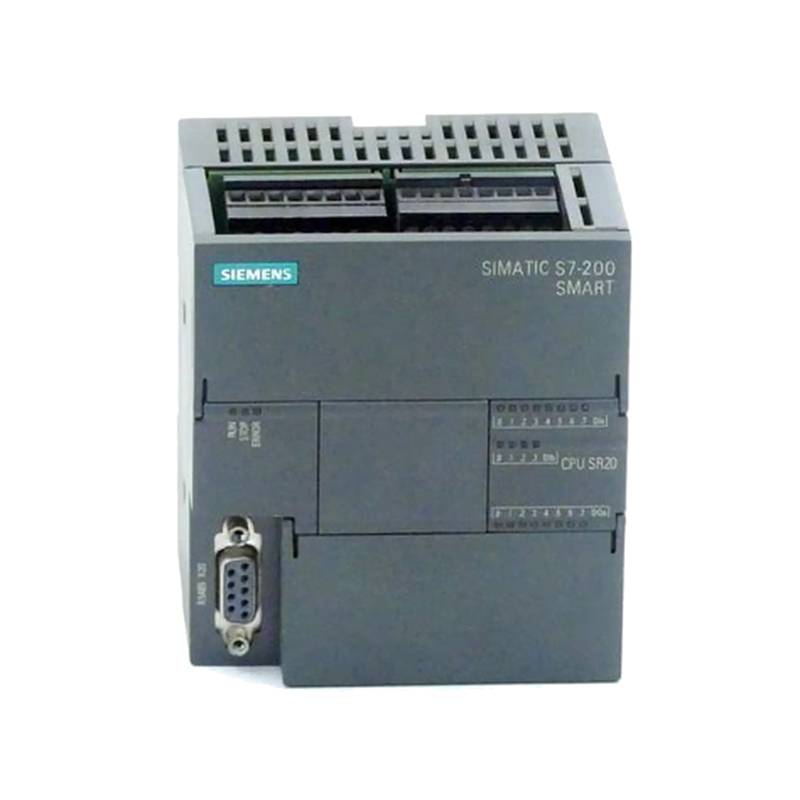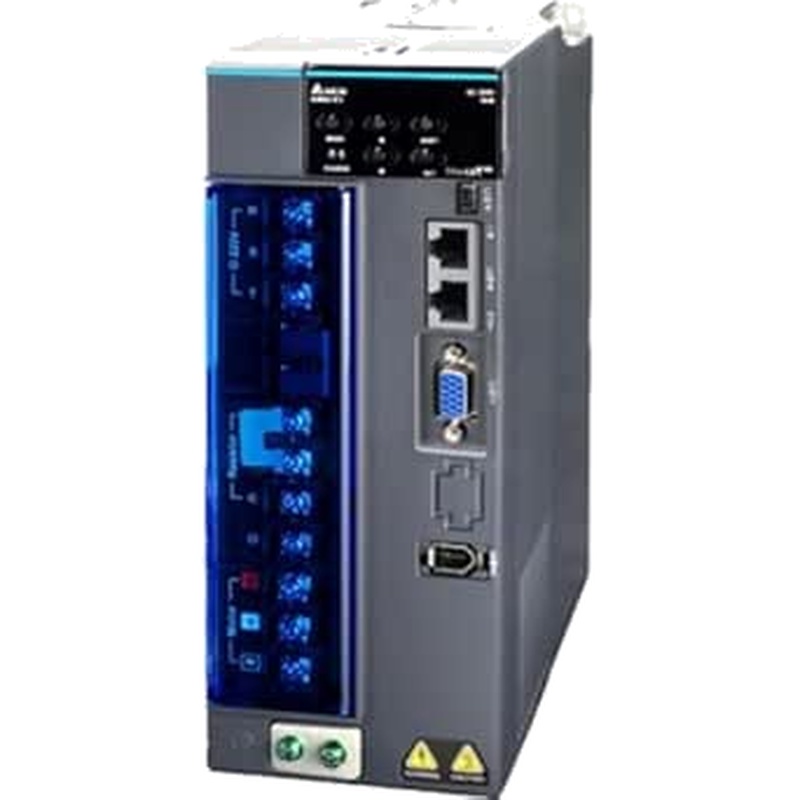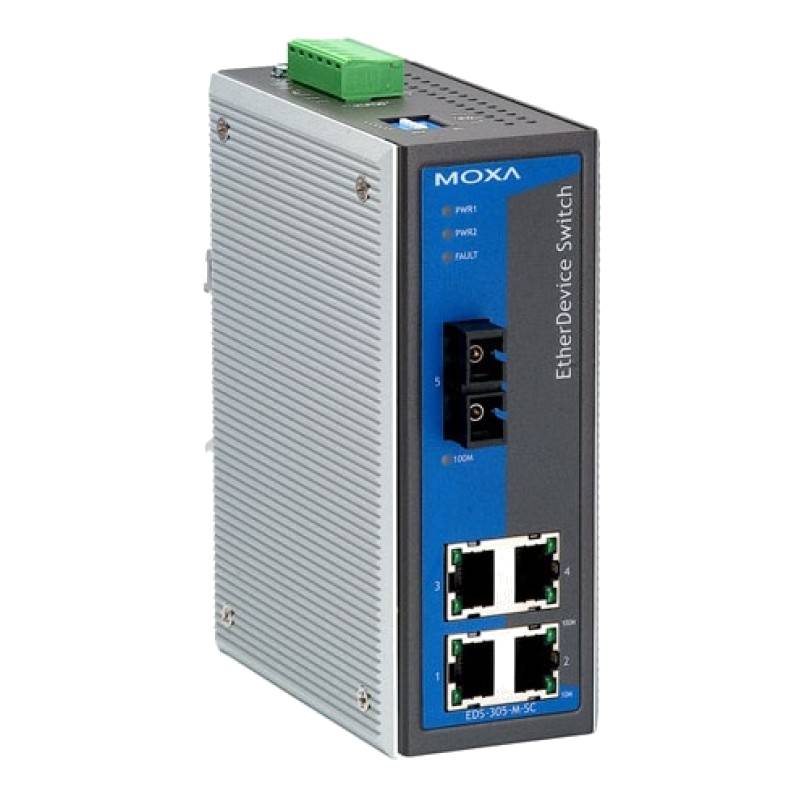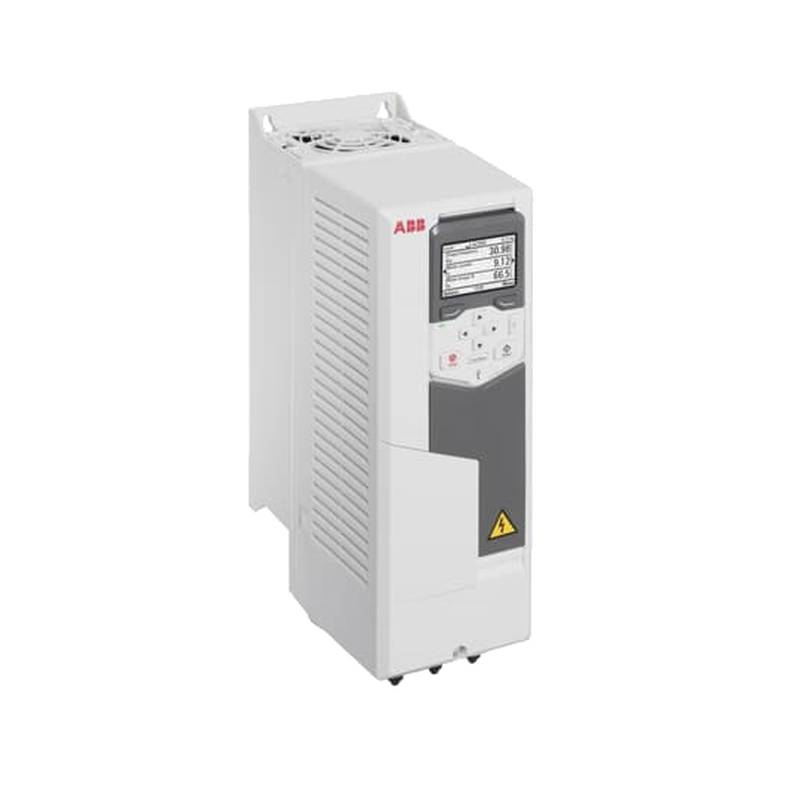
The YASKAWA V1000 V1000 VFD VB4A0038FBA represents a pinnacle in variable frequency drive technology, engineered for demanding industrial applications requiring precise motor control and robust performance. This advanced drive boasts a 31A current rating and a substantial 15kW power capacity, making it exceptionally well-suited for a wide array of motor-driven systems. Key advantages include its sophisticated vector control algorithm, enhanced energy-saving capabilities, and user-friendly interface, all contributing to optimized operational efficiency and reduced energy consumption. The V1000 series, specifically the VB4A0038FBA model, delivers superior speed regulation, torque response, and reliability, ensuring seamless integration and long-term value in critical production environments.
Product Specifications
| Parameter | Specification |
| :------------------------ | :------------------------------------------ |
| Model Number | VB4A0038FBA (V1000 Series) |
| Rated Current | 31A |
| Rated Power | 15kW (20HP) |
| Input Voltage | 3-Phase, 380-480V AC |
| Output Frequency | 0 to 400 Hz |
| Control Method | Open Loop Vector Control, V/f Control |
| Overload Capacity | 150% for 60 seconds |
| Protection Class | IP20 |
| Operating Temperature | -10°C to +50°C |
| Dimensions (H x W x D) | 270mm x 143mm x 169mm |
Core Features & Market Positioning
The YASKAWA V1000 VB4A0038FBA distinguishes itself through its advanced open-loop vector control, providing precise torque and speed regulation comparable to closed-loop systems, but without the need for an encoder. This capability is a significant differentiator, particularly in applications where cost-effectiveness and simplicity are paramount. Its integrated harmonic mitigation features and sophisticated energy-saving algorithms, such as the online autotuning and automatic energy saving function, directly translate into reduced operational expenses and a lower carbon footprint for industrial users. Positioned as a high-performance, versatile drive, the V1000 series consistently garners praise for its reliability, ease of use, and Yaskawa's renowned global support network, making it a preferred choice for manufacturers seeking dependable and efficient motor control solutions.
Key Application Scenarios
The robust performance and flexibility of the YASKAWA VB4A0038FBA V1000 drive make it an ideal solution for a multitude of industrial applications. It excels in controlling centrifugal fans and pumps, where its precise speed regulation significantly optimizes fluid dynamics and reduces energy consumption. This drive is also highly effective in conveyor systems, machine tools, and extruders, providing the necessary torque and control for demanding material handling and processing tasks. Furthermore, its ability to handle fluctuating loads and provide smooth acceleration/deceleration makes it suitable for elevators, escalators, and other variable-load equipment across diverse sectors, including manufacturing, HVAC, and water treatment.
Practical System Integration Guidance
Integrating the YASKAWA V1000 VFD VB4A0038FBA into existing industrial systems is streamlined due to its user-friendly design and comprehensive documentation. Proper wiring is crucial; ensure the input power terminals (R, S, T) are connected to the appropriate three-phase AC supply, and the output terminals (U, V, W) are correctly connected to the motor. The drive's onboard digital operator allows for intuitive parameter setting, enabling users to configure speed references, acceleration/deceleration times, and fault resets directly. For advanced configurations, such as external control signals or communication network integration (e.g., Modbus RTU), consult the Yaskawa V1000 programming manual for detailed instructions on terminal block assignments and communication parameter setup. Always adhere to local electrical codes and safety regulations during installation.
Operation and Risk Mitigation
Operating the YASKAWA VB4A0038FBA V1000 drive involves understanding its various operating modes and safety features. The drive should be installed in a clean, dry environment with adequate ventilation to prevent overheating. Potential risks include electrical shock during installation or maintenance; always de-energize the system and follow lockout/tagout procedures before any work is performed. Common troubleshooting involves checking for error codes displayed on the operator panel. For instance, an "OL" (Overload) fault typically indicates that the motor is drawing more current than the drive is rated for or that the acceleration time is set too short, requiring adjustments to load conditions or acceleration parameters. Understanding and responding to fault codes promptly ensures system stability and prevents damage.
Scalability & Long-Term Value
The YASKAWA V1000 VFD VB4A0038FBA offers significant scalability and long-term value through its compatibility with broader Yaskawa ecosystem and emerging industrial trends. Its modular design allows for the addition of option cards, such as communication modules for integration into advanced automation networks like EtherNet/IP or Profinet, facilitating seamless connection with PLCs and SCADA systems. This adaptability ensures that the drive can evolve with a facility's automation strategy, supporting Industry 4.0 initiatives and the Internet of Industrial Things (IIoT). The inherent reliability and energy-saving features of the V1000 series contribute to a lower total cost of ownership over its extended lifespan, making it a sound investment for businesses focused on operational efficiency and future-proofing their infrastructure.
FAQs
What is the maximum output frequency for the YASKAWA VB4A0038FBA V1000 drive?
The YASKAWA VB4A0038FBA V1000 drive is capable of operating at output frequencies up to 400 Hz. This wide frequency range allows for precise control of motors across various speed requirements.
This extensive frequency capability is crucial for applications demanding high-speed operation or fine-tuned speed adjustments. It ensures that the drive can effectively manage a broad spectrum of motor speeds needed in diverse industrial settings.
The ability to reach 400 Hz means the drive can support specialized machinery and processes that require rapid rotational speeds for optimal performance. It provides the flexibility needed for dynamic and demanding applications.
What type of motor control does the YASKAWA VB4A0038FBA V1000 use?
This YASKAWA V1000 drive primarily utilizes open-loop vector control for precise motor speed and torque regulation. It also supports standard V/f control for simpler applications.
Open-loop vector control offers superior performance by estimating motor flux and torque, allowing for dynamic response without a motor-mounted encoder. This enhances efficiency and accuracy.
V/f control is a more basic method suitable for centrifugal loads where precise torque control is not as critical. It simplifies setup for less demanding applications.
How do I perform basic parameter settings on the YASKAWA VB4A0038FBA V1000?
Basic parameter settings can be performed directly using the drive's onboard digital operator keypad and display. Navigate through menus to adjust frequency references, acceleration/deceleration times, and operational modes.
Refer to the V1000 user manual for specific parameter numbers and their functions. It's recommended to start with essential parameters like maximum frequency and motor data for initial setup.
After initial setup, always perform an auto-tuning procedure if using vector control to optimize performance based on the connected motor's characteristics. This ensures efficient and accurate operation.
What are the primary advantages of using the YASKAWA V1000 VFD VB4A0038FBA?
Key advantages include its advanced open-loop vector control for precise motor management and energy-saving features that reduce operational costs. Its robust design ensures high reliability in demanding industrial environments.
The drive offers simplified installation and commissioning due to its user-friendly interface and comprehensive documentation. Its compact size also allows for space-saving integration into control panels.
Furthermore, the V1000 series provides excellent protection features and diagnostic capabilities, minimizing downtime and facilitating efficient troubleshooting, thus enhancing overall productivity.
Can the YASKAWA VB4A0038FBA be used with single-phase motors?
No, the YASKAWA VB4A0038FBA is designed exclusively for three-phase motors. It requires a three-phase AC input power supply to operate correctly.
Using this drive with a single-phase motor would require a phase converter, which is not an integrated feature of the V1000 drive itself. This setup can introduce complexities and potential performance issues.
Always ensure your motor is a three-phase induction motor and that your power supply is three-phase for safe and effective operation with this Yaskawa VFD model.
What is the overload capacity of the YASKAWA V1000 VFD VB4A0038FBA?
The drive provides an overload capacity of 150% of its rated current for a duration of 60 seconds. This allows it to handle temporary high current demands without tripping.
This overload capability is essential for applications where motors may experience transient load increases during startup or operation, ensuring continuous system performance.
It's important to monitor overload conditions closely. Persistent overloads beyond this rating can indicate motor issues or undersized drive selection, potentially leading to drive damage if not addressed.
How does the YASKAWA VB4A0038FBA contribute to energy savings?
The YASKAWA V1000 VB4A0038FBA incorporates advanced energy-saving functions that optimize motor speed based on actual load requirements, significantly reducing power consumption. Its auto-tuning feature further refines motor efficiency.
By precisely controlling motor speed instead of running at full speed, the drive minimizes wasted energy, especially in variable torque applications like pumps and fans. This translates to direct cost savings.
The drive's efficient design and ability to operate at lower frequencies when demand is reduced contribute to a lower overall carbon footprint and improved sustainability for industrial operations.
What are typical fault codes for the YASKAWA VB4A0038FBA?
Common fault codes include "OL" for overload, "OC" for overcurrent, and "OV" for overvoltage. Each code indicates a specific issue that needs to be addressed to restore operation.
"OL" typically suggests the motor is drawing too much current, possibly due to excessive load or short acceleration times. "OC" indicates a rapid current surge, often related to short circuits or motor issues.
"OV" is usually related to the DC bus voltage exceeding the drive's limit, which can occur during regenerative braking or issues with the incoming power supply. Always consult the manual for detailed troubleshooting steps for each code.
What is the IP rating of the YASKAWA VB4A0038FBA V1000?
The YASKAWA VB4A0038FBA V1000 drive has an IP20 protection rating. This means it is protected against solid objects greater than 12.5 mm (like a finger) but offers no protection against water.
This rating is standard for drives intended for installation within enclosed control cabinets where they are shielded from environmental contaminants and direct contact. Proper enclosure is crucial.
Installations must ensure the drive is protected from dust, moisture, and corrosive elements to maintain its performance and longevity, as the IP20 rating does not offer ingress protection against liquids.
Can this drive be integrated with IIoT platforms?
Yes, the YASKAWA V1000 VFD VB4A0038FBA can be integrated with IIoT platforms through optional communication cards. These cards enable seamless data exchange with supervisory systems.
By adding modules for protocols like EtherNet/IP, Modbus TCP, or Profinet, the drive becomes a connected device, allowing for remote monitoring, predictive maintenance, and integration into smart factory environments.
This connectivity empowers users to leverage real-time data for performance optimization, process control, and advanced analytics, aligning with Industry 4.0 objectives.














